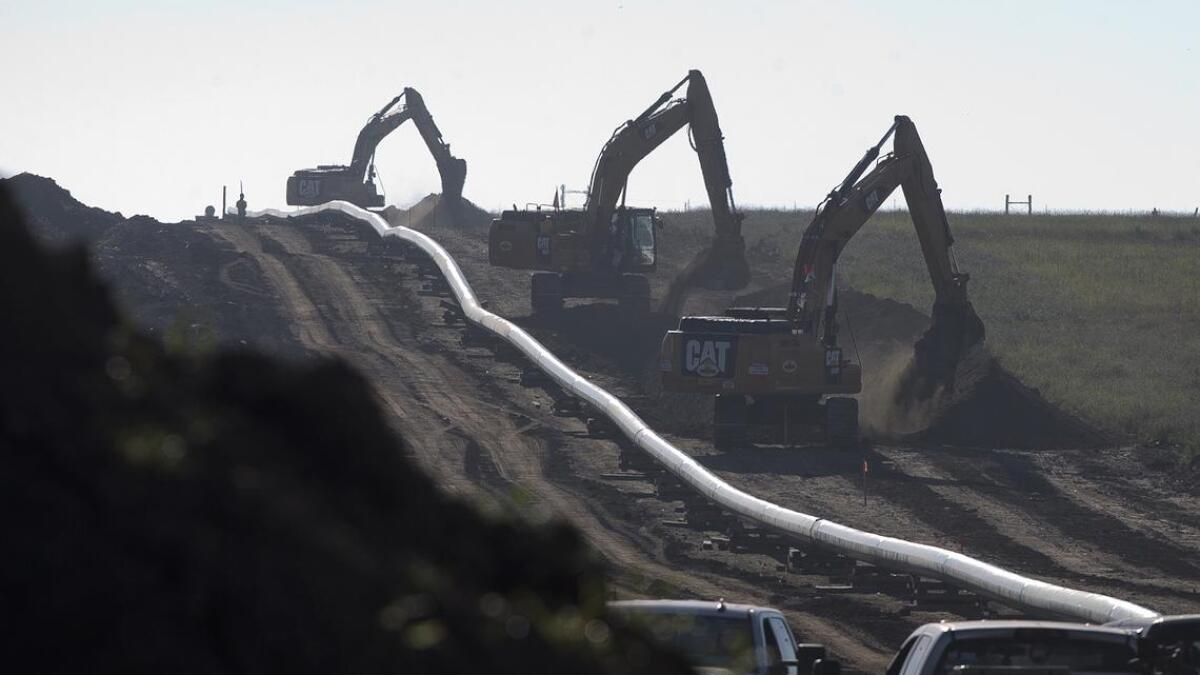Illinois court sends pipeline plans back to regulators


By JAMES MacPHERSON | Associated Press
BISMARCK, N.D. (AP) — An Illinois appellate court has set aside a decision by state regulators that would allow the Dakota Access oil pipeline to double capacity to 1.1 million barrels daily.
In a 60-page decision filed Wednesday, the appellate court’s three-judge panel ordered the Illinois Commerce Commission to review the public need for the project that moves North Dakota oil to a shipping point in Illinois. The court said the commission must consider the public need “for the people of the United States, not the world.”
The court said regulators must also consider regulatory violations in Pennsylvania by Sunoco, one of the pipeline’s owners.[1]
It ordered Illinois regulators to issue a new decision within 11 months, while restricting the pipeline’s capacity to 570,000 barrels per day.
The $3.8 billion, 1,172-mile (1,886 kilometer) underground pipeline has been moving oil since 2017. It was subject to prolonged protests and hundreds of arrests during its construction in North Dakota in late 2016 and early 2017 because it crosses beneath the Missouri River, just north of the Standing Rock Sioux Reservation. The tribe draws its water from the river and fears pollution.
Texas-based Energy Transfer, which built the pipeline, has insisted it would be safe and that the expansion would be, too.
Opponents argue that moving more oil through the pipeline increases the probability of a disastrous oil spill.
North Dakota regulators in 2020 unanimously approved expanded capacity for the Dakota Access pipeline from 570,000 barrels daily to 1.1 million barrels, saying they believed the project had met exhaustive state and federal requirements.[2] Pipeline backers said the expansion was needed to meet the growing demand for oil shipments from North Dakota, without the need for additional pipelines or rail shipments.
Additional pump stations were needed in the Dakotas and Illinois to add horsepower to push more oil through the line. Regulators in those states approved the additional stations.
In Illinois, the Sierra Club, the Natural Resources Defense Council and others protested the commission’s approval, sending it to the appellate court.
Pipeline owners announced last summer that the line was able to transport 750,000 barrels a day along the line. But North Dakota Pipeline Authority Director Justin Kringstad said Thursday that amount likely has not been achieved to date.
North Dakota’s oil production is 1.1 million barrels daily at present. Rail and other pipelines ship oil that doesn’t move on the Dakota Access pipeline.
Kringstad said the ruling in Illinois won’t have any immediate impact on North Dakota’s oil production or the ability to ship it. But the “long-term outlook remains uncertain,” he said.
The biggest obstacle for the pipeline’s operation remains in federal court. A Washington, D.C., Circuit Court of Appeals panel last year supported the Standing Rock Sioux and other tribes’ argument that the project deserves a thorough environmental review and is currently operating without a key federal permit.
The study will determine whether the U.S. Army Corps of Engineers reissues a permit for the line to cross the Missouri River in south-central North Dakota.
The Chicago Journal needs your support.
At just $20/year, your subscription not only helps us grow, it helps maintain our commitment to independent publishing and remain free from influence.
Notes & References
Rubinkam, Michael. “Pipeline Developer Charged over Systematic Contamination.” AP NEWS. Associated Press, October 5, 2021. https://apnews.com/article/business-pennsylvania-philadelphia-environment-crime-20c337b3e287091c7f7fb6f62156b6e1. ↩︎
MacPHERSON, JAMES. “North Dakota Regulators OK Expanded Dakota Access Pipeline.” AP NEWS. Associated Press, February 19, 2020. https://apnews.com/article/nd-state-wire-sd-state-wire-us-news-north-dakota-ia-state-wire-5a615c357e7c0f8f5708198a0690edd9. ↩︎

